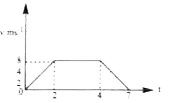Which of the following is mismatched w.r.t its duration?
(a) Atrial systole : 0.1 secs
(b) Atrial diastole : 0.5 secs
(c) Ventricular systole : 0.3 secs
(d) Joint diastole : 0.4 secs
Atrial systole : 0.1 secs
Atrial diastole : 0.5 secs
Ventricular systole : 0.3 secs
Joint diastole : 0.4 secs
To determine which of the given options is mismatched with respect to its duration, we need to analyze each option based on the standard durations of the phases of the cardiac cycle.
1. Atrial Systole: This phase is the contraction of the atria. The duration is typically around 0.1 seconds.
- Conclusion: This option is correctly matched.
2. Atrial Diastole: This phase is the relaxation of the atria. The duration is usually about 0.7 seconds.
- Conclusion: This option is mismatched as it is stated to be 0.5 seconds.
3. Ventricular Systole: This phase is the contraction of the ventricles. The duration is approximately 0.3 seconds.
- Conclusion: This option is correctly matched.
4. Joint Diastole: This phase refers to the period when both the atria and ventricles are relaxed. The duration is generally around 0.4 seconds.
- Conclusion: This option is correctly matched.
Based on the analysis, the mismatched option is:
(b) Atrial diastole: 0.5 secs (it should be 0.7 secs).
Summary of the Solution:
- Atrial Systole: 0.1 secs (Correct)
- Atrial Diastole: 0.5 secs (Mismatched, should be 0.7 secs)
- Ventricular Systole: 0.3 secs (Correct)
- Joint Diastole: 0.4 secs (Correct)
Final Answer:
(b) Atrial diastole: 0.5 secs is the mismatched option.
- Conclusion: This option is correctly matched.
- Conclusion: This option is mismatched as it is stated to be 0.5 seconds.
- Conclusion: This option is correctly matched.
- Conclusion: This option is correctly matched.
- Atrial Systole: 0.1 secs (Correct)
- Atrial Diastole: 0.5 secs (Mismatched, should be 0.7 secs)
- Ventricular Systole: 0.3 secs (Correct)
- Joint Diastole: 0.4 secs (Correct)
(b) Atrial diastole: 0.5 secs is the mismatched option.
Topper's Solved these Questions
Similar Questions
Which of the following is not a unit of time
A) par sec B) light year C) micron D) sec
View SolutionDifferentiate the following functions w.r.t. x:
secax
View SolutionMatch the columns : (a) Atrial systole (Column I) (i) 0.7 seconds (Column II) , (b) Joint diastole (Column I) (ii) 0.3 seconds (Columnn II) (c) Ventricular systole (Column I) (iii) 0.1 second (Column II) , (d) Atrial diastole (Column I) (iv) 0.4 seconds (Column II)
View SolutionDifferentiate the following functions w.r.t. x:
secmx
View SolutionDifferentiate the following functions w.r.t. x:
sec(px+q)
View SolutionWhich of the following is not a unit of time
A) par - sec B) light - year C) micron D) sec
View SolutionDifferentiate the following functions w.r.t. x:
sec(x2−1)
View SolutionDifferentiate w.r.t x using quotient rule .
(secx−1)/(secx+1)
View SolutionFigure given here shows the variation of velocity of a particle with time.

Find the following:
(i) Displacement during the time intervals.
(a) 0 to 2 sec., (b) 2 to 4 sec. and (c) 4 to 7 sec
(ii) Accelerations at
(a)t = 1 sec, (b) t = 3 sec. and (c)t = 6 sec.
(iii) Average acceleration
(a) between t = 0 to t = 4 sec.
(b) between t = 0 to t = 7 sec.
(iv) Average velocity during the motion.
View SolutionDifferentiate the following functions w.r.t. x:
sec(ax−b)x2−2
View Solution
